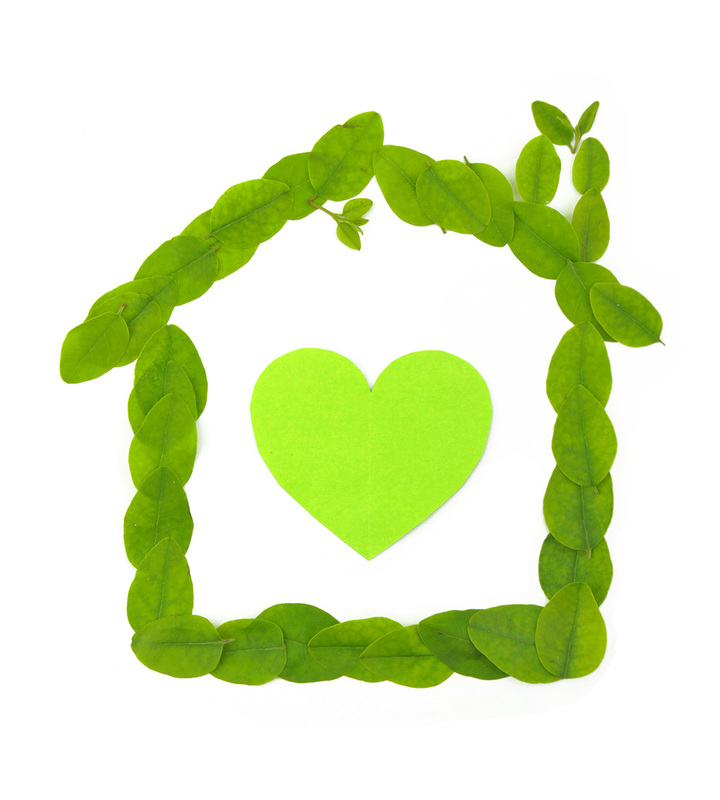|
As the drive for energy-efficient and eco-friendly building continues, each passing year brings new products on the market that promise improved performance.
As green building inches toward becoming the norm for builders, it drives the development of new products to fill market demand. The trend is fueled not only by creative new building techniques, but also by rehabbing existing buildings, such as those owned by the federal government. Even better, the benefits of the improved green building materials are two-fold: Many are made of sustainable products, and due to their performance increase the efficiency of the buildings in which they are used, thus helping the environment. While many green building materials continue to hit the market, driven by innovation and technology, here’s a look at five hot products: Mowawk Smart Strand Carpet – Made from renewably sourced ingredients, which replaced petroleum products, these stain-resistant carpets are actually recyclable at the end of their product life. Filterpave – This porous material, replacing traditional pavement materials, manages storm runoff by actually allowing water to penetrate its surface, and remains stable. It gets even better, as it is made from 96 percent ground glass and other recycled materials. Vireo – Finding new uses for old tires is nothing new. This product made from 50 percent recycled tires has a huge variety of uses, including as a roof coating and as a coating to protect metals. Malama Rigid Foam – Made from renewable resources like soy, hemp and recycled plastics, this product has a wide variety of uses. When used as insulation, it has high moisture and heat resistance, excellent acoustics, and protection against mold. Struxure – This innovative composite building material is made from 100 percent recycled material and has a wide variety of uses. While performing better and lasting longer than conventional materials like wood, it is billed as being impervious to insects, rust, rot, splintering, and absorbing moisture.
0 Comments
The "Arts and Crafts" style of architecture was the result of an early 19th-century movement that promoted traditional craftsmanship and simple forms, and left a lasting impact on homes throughout the United States.
The movement made its way to America at the turn of the century and is reflected in home styles and neighborhoods that were established from 1900 to 1930. Led by well-known furniture maker Gustav Stickley, Chicago architects Frank Lloyd Wright and George Washington Maher, and West Coast architects like Charles Sumner Greene and Henry Mather Greene, Julia Moran and Bernard Maybeck, the intent was to make the hallmarks of the movement--handcrafted artistry and exquisite craftsmanship – available for the working-class. More closely defined as an intellectual approach to architecture, the movement inspired many influential styles of homes including the bungalow, craftsman, prairie and foursquare, which still remain popular today. Because "Arts and Crafts" was a broad movement, there are many common factors and variations of key elements. Bungalows and Craftsman homes are built of natural materials and feature open floors plans and low-pitched roofs, often with wide overhangs. Elements you're likely to find include built-in furniture and light fixtures, fireplaces, exposed beams and porches with thick square or round columns. Both styles are most prevalent in California and on the West Coast. Prairie and Foursquare styles were first popularized in the Midwest. Prairie-style homes are modest and harmonize with the flat, open spaces by emphasizing horizontal lines and typically feature low-pitched gable roofs, wide eaves, and open interior plans centered on a fireplace. A close relative of the Prairie style, Foursquare feature hipped or pyramid-shaped roofs, overhangs, large porches and square or rectangular floor plans that also emphasize open concepts. Mid-Century Modern is an architectural style that generally describes modern designs that emerged following World War II and continued in development until the 1960s. Now recognized as a significant design movement, it is accepted as having several major influences that helped create its timeless style.
Many consider the movement in America a reflection of the International and Bauhaus movements in Europe, led by Walter Gropius, Marcel Breuer and Ludwig Mies van der Rohe. Architect Frank Lloyd Wright is also seen as a major influence, training architects like Richard Neutra and Rudolph Schindler. Names like Joseph Eichler, John Entenza, George Fred Keck, his brother Willam Keck and Henry P. Glass were also instrumental in bringing the style to different parts of the country. Mid-Century design was frequently deployed in the architecture of the American post-war suburbs. It is characterized by flat planes, clean lines, large glass windows and open spaces and floor plans. While the style is easily distinguishable from other architectural styles, functionality is also a critical component, as average American families of the post-war era were the target of the movement. The modern designs of the movement were not only sleek and minimalist, but with an eye on being functional for the average family. Here are some key elements: •- Flat planes: Homes feature geometric lines with flat or shed roofs and pronounced overhangs to give a geometric, angular appearance. •- Interior themes: A unified central area is the focus of wide-open, flowing floor plans that feature changes in elevation. Changes in elevation via small steps between rooms create split-level spaces. •- Healthy lifestyle: Rooms feature large windows and sliding glass doors for natural lighting and multiple outdoor views. While there are many examples of Mid-Century Modern throughout the United States, many of the most historic examples reside in Southern California. Classic examples can be found in communities like Silver Lake, the Hollywood Hills, Pasadena, Palm Springs, Bel-Air, Pacific Palisades, Encino and Studio City, among many others. If you are looking for a fun place where you can interact with the exhibits, you need to take some time to visit the California Science Center. It’s a place the whole family will love. Before we get into what you can see and do there, let’s take a look at the history of this amazing building.
Located in Exposition Park in Los Angeles, the science center was first established back in 1951 as the California Museum of Science and Industry. The name change took place back in 1998, but plans to make the center something a lot more special began 5 years before that. It was in 1993 that a three-part transformation and upgrade was put into motion, with the first phase including the addition of the massive IMAX Theater that is now one of the most popular spots in the center. Phase II was more about the infrastructure, with parking added and some aesthetically pleasing changes made to the gardens and exterior of the building. The third and final phase – World’s Beyond – is still in the planning process. Each of the exhibits are broken down into individual galleries, all of which present the information in an educational way, but also in a style that is fun and totally interactive. Best of all, the permanent exhibits in the California Science Center are always free to visit, although you will have to pay for parking, as well as for tickets to special exhibits and the IMAX Theater. One of the biggest exhibits, in more ways than one, is the Space Shuttle Endeavor, which is currently on display to the public. This is one that you will need to call ahead and make a reservation for, as it is incredibly popular and always very busy. There are a number of special exhibits that travel into the science center for small periods of time. The majority of these are put together by other museums across the country. These change out regularly, which means there is always something new and exciting to see every time you visit. In fact, if you live in L.A. or the surrounding area, you might consider becoming a member so you can see all of the traveling exhibits for one low price. There really is something fun for everyone in the family at the California Science Center. The center is open from 10am to 5pm every day, excluding holidays, which means you have plenty of time to go and take in the sights. You can visit their website or call them at (323) 724-3623 for more information. Why settle for a stuffy old museum where all the exhibits are stored behind glass cases when you can take a trip to the California Science Center and have a real hands-on experience? School parties can be an easy excuse for unhealthy junk foods and sweets ending up on your child's plate. You can gain popularity among the other parents while ensuring all the kid's still enjoy all the festivities with some healthy party snack solutions. Try these easy to make homemade and nutritious recipes at your next school event or children's party and you won't have to worry about unhealthy eating habits.
Magic Fruit Wands Similar to kabobs, try using a popsicle stick, coffee stirrer, or chopstick (a less sharp option) to create these creative snacks. Line up your favorite arrangement of fruit on the stick, finishing it off with a cut out fruit star at the top. To get step by step instructions to on make these healthy treats take a look at this video: http://www.youtube.com/watch?v=jKxA8SOM-0k Pita Pizzas Forget delivery and make these easy and healthy Pita Pizzas. First spread tomato sauce on whole-wheat pitas. Use reduced fat mozzarella and top off with meats and veggies. Drizzle with a little olive oil and bake in the toaster oven until the cheese is melted and the veggies are cooked. Monkey Food A fun take on trail mix. Individually bag banana chips, almonds, and raisons and label the bags as “Monkey Food”. This sweet treat also make a great packed lunch snack that can replace potato chips or cookies. Turkey Pinwheels Instead of boring sandwiches try making pinwheels wraps. Spread hummus, mustard, or reduced fat cream cheese on whole-wheat tortillas. Pile on turkey breast, spinach, and veggies. Roll up the wrap like a burrito and cut them into slices. Lastly, secure them with toothpicks and serve on a party platter. |
Categories
All
Archives
June 2016
|
|
Contact Kirsten to get started today.
(310) 756-3524 [email protected] #DRE 01450452 Ask her about her newsletter to get current South Bay Market information and real estate news right to your inbox... no spammy ones, promise! |
|
Copyright © 2021 Kirsten Cole. All rights reserved.







 RSS Feed
RSS Feed
